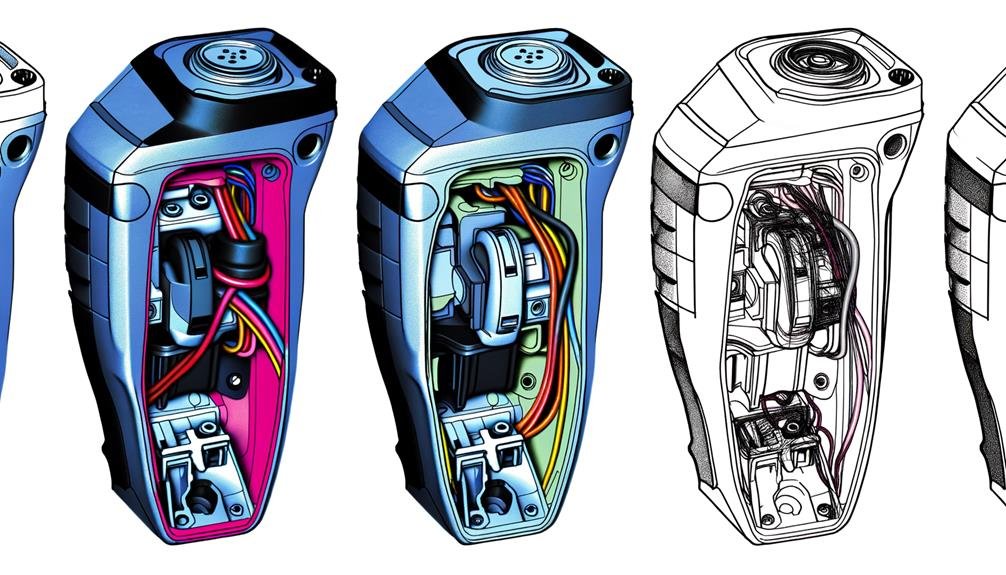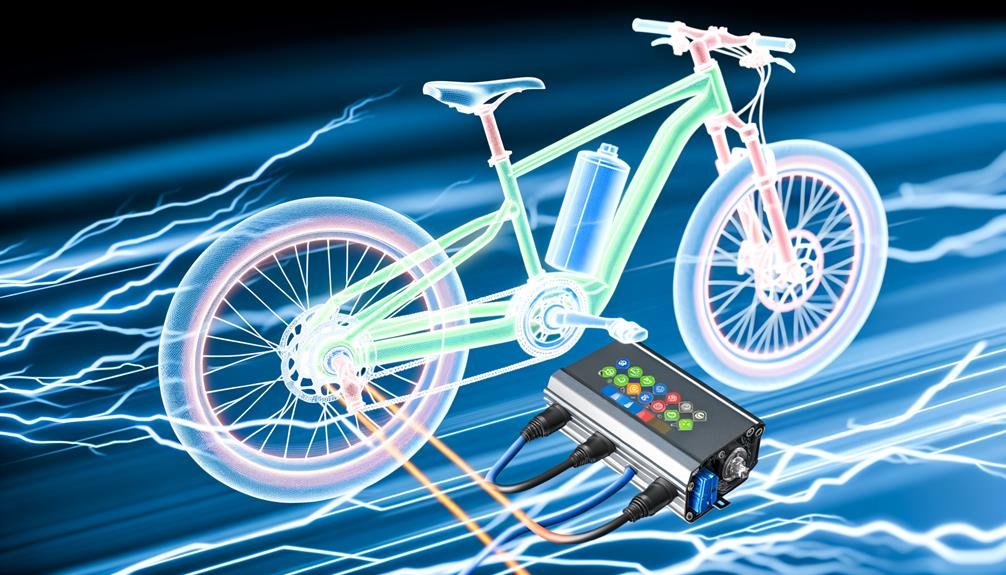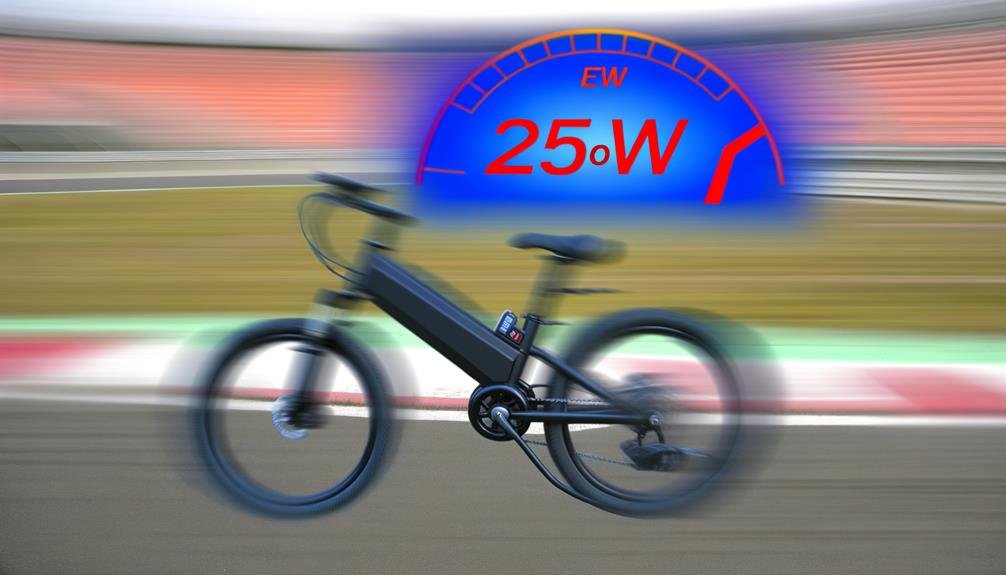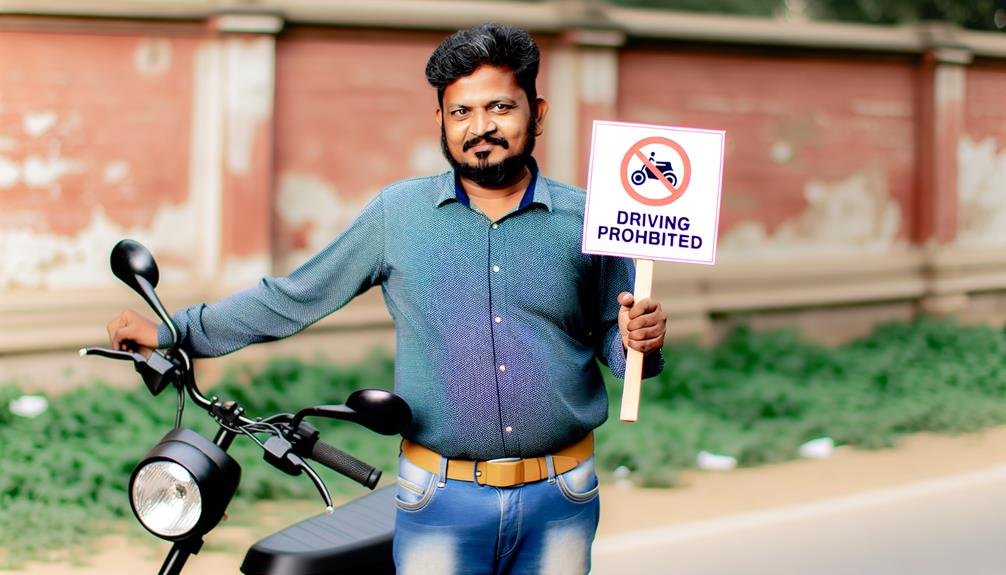Charles Miller is a veteran bike enthusiast with over 12 years of experience dealing with bikes as a mechanic. Despite immense love and expertise for...
While most of us might think that the secret to the magic of electric bikes is hidden in their stylish, aerodynamic design or in the promise of zooming up hills without breaking a sweat, the real marvel is something most of us overlook – the electric bike controller.
As I've come to understand, this marvel of modern technology is the veritable brain of the e-bike, managing everything from speed to start and stop functions. It's a complex piece of machinery, involving pulse waveforms, MOSFET drive circuits, and a host of protective functions.
But how exactly does this intricate component work? And how does it manage to translate our simple inputs into smooth, effortless cycling?
Let's embark on this fascinating journey to understand the inner workings of the e-bike controller.
Key Takeaways
- Electric bike controllers use Hall sensor feedback to gauge rotor speed and position.
- Throttle input determines the duty cycle of the PWM signal applied to the output FETs, which sets the motor speed.
- Different types of e-bike controllers include brushed DC motor controllers and brushless DC motor controllers.
- When choosing the right e-bike controller, factors to consider include voltage, power, current ratings, motor current matching, waveform type (sine wave or square wave), and sensor type (Hall sensor or non-Hall sensor driven).
Understanding Electric Bike Controllers
Diving right into the heart of electric bike controllers, we find that they use Hall sensor feedback to gauge the speed and position of the rotor. This is a pivotal part of understanding electric bike controllers. The controller's vital role ensures that the outputs from the three phase drive terminals are in sync. This harmony is key in the operation of an electric bike.
Here's the interesting part: the controller uses the throttle input to determine the duty cycle of the pulse width modulated (PWM) signal applied to the output FETs. The PWM duty cycle is what determines the voltage that the motor sees and sets the motor speed. Amazing, isn't it? This is how the electric bike controller works to control the motor.
Whether we're dealing with brushed motors or brushless motors, the controller is the brain behind the operation. It's the unsung hero that keeps the bike running smoothly. And it doesn't stop there, the controller even monitors the battery.
Functions of the E-bike Controller
After comprehending the general operation of the electric bike controller, let's now unpack its specific functions that keep your e-bike running smoothly. The ebike controller, often referred to as the brain of the eBike, serves several key functions that are crucial to its operation.
| Function | Explanation | Emotional Benefit |
|---|---|---|
| Interfaces with sensors | Determines rotor speed and position | Ensures a smooth ride |
| Synchronizes outputs | Manages three phase drive terminals' outputs | Provides reliable power |
| Modulates PWM signal | Alters motor speed based on throttle input | Gives you control |
| Implements stepped sequence | Generates a pseudo three-phase signal | Ensures efficient power use |
| Utilizes capacitors | Smooths phase current pulses and lifts drive voltage | Guarantees a steady ride |
These functions of the e-bike controller are what enable you to enjoy the freedom of an e-bike ride, knowing that the controller works to ensure your safety and comfort. Through managing motor current and acting as a speed controller, it ensures you belong on the road, no matter your speed or distance. So the next time you're asked 'how does electric bike controller work?', you'll be able to explain with confidence.
Different Types of E-bike Controllers

Let's explore the diverse world of e-bike controllers, from the simple brushed DC motor controllers to the efficient brushless DC motor controllers and beyond. Understanding how different types of e-bike controllers work can help us appreciate the technology behind the smooth ride of our electric bikes.
Here's a quick rundown:
- Brushed DC Motor Controllers
- Simple design, ideal for DIYers.
- Commonly used in scooters and light electric vehicles.
- Brushless DC Motor Controllers
- High reliability and efficiency.
- A sensor in the motor makes it suitable for various electric vehicles.
Choosing the right controller involves several considerations:
- Controller voltage, power, and current ratings.
- Matching phase current with the motor current.
- Deciding between a sine wave or square wave controller.
- Whether the controller is Hall sensor or non-Hall sensor driven.
Lastly, companies like JOBO Technology offer specialized controller options. Their controllers are composed of high-current Moss tubes, optimized for high-speed motors, and include features like overvoltage protection. As we delve deeper into the world of electric bikes, remember that the pedal assist system wouldn't be possible without these sophisticated controllers.
Selecting the Right E-bike Controller
Choosing the right e-bike controller can make a significant difference to your ride.
I'll first guide you through understanding controller specifications, which are crucial for compatibility with your motor and battery.
Then, we'll compare different controllers and look into essential controller features that ensure safe and efficient operation.
Understanding Controller Specifications
Diving into the realm of electric bike controllers, it's crucial to grasp the specifications that govern their operation and how they influence your ride.
An ebike controller regulates the motor's speed, voltage, and battery usage.
The controller specifications can be broadly broken down into:
- Functionality: The controller uses sensor feedback and throttle input to manage the motor speed.
- Motor Control Mechanism: It runs a fixed switching sequence which determines the frequency of motor RPM.
MOSFET Configuration and Capacitors:
- Capacitors: These parts smooth phase current pulses and lift drive voltage.
- MOSFET: This configuration increases current handling capacity, ensuring your electric bike's consistent functionality.
Understanding these specifications will help you choose the right controller for your ebike and ultimately enhance your riding experience.
Comparing Different Controllers
After getting a grip on controller specifications, we can now start comparing different controllers to find the perfect fit for your e-bike.
When comparing different controllers, it's crucial to consider the ebike motor controllers' design. Some advanced controllers use a Hall sensor feedback system for precise rotor speed and position, ensuring a smooth ride.
Moreover, different controller designs offer varying benefits. For instance, controllers with big capacitors provide smoother phase current pulses, enhancing your e-bike's performance.
Moreover, the controller driving type is significant, with some matched motors preferring a specific type.
In essence, understanding how an electric bike controller works and comparing different controllers can help you select the most suitable controller for your e-bike.
Essential Controller Features
When it comes to selecting the right e-bike controller, understanding its essential features is key. A good ebike controller:
- Monitors the temperature to protect the battery and the motor
- Provides over-voltage protection to prevent damage
- Controls the position of the rotor for efficient power utilization
Here's a deeper look:
- The controller for electric bikes uses a drive circuit to manage power delivery, ensuring smoother rides and longer battery life.
- In advanced controllers, the rotor's position is continually adjusted for optimal performance.
Connecting the E-bike Controller
So, how do you connect the controller on your electric bike? It's not as daunting as it may seem. First, you'll need to identify the various wires on your electric bike controller. Typically, you'll find wires for the motor, battery, brakes, and throttle, or PAS. Some advanced models might include additional wires for features like a display, speedometer, or LED light.
Connecting the e-bike controller involves matching these wires to their respective counterparts on the bike. It's like a puzzle where every piece has its place. Keep in mind, the controller voltage and controller current are key factors here. They need to match the supply voltage of your bike to ensure everything runs smoothly.
Now, let's talk about the Hall sensor, a crucial component that helps control the motor's operation. This sensor drive has a significant role in the overall performance of your e-bike.
Importance of E-bike Controllers

Let's now shift our focus to the importance of e-bike controllers.
We'll be looking at the role they play, understanding different types of controllers, and how to troubleshoot any issues that might arise.
This knowledge can be pivotal in maximizing the performance of your electric bike and dealing with potential problems.
E-bike Controller's Role
E-bike controllers, often referred to as the brains of electric bikes, play a crucial role in brushless motor operation, interpreting and relaying signals from various components, and offering vital protection functions. As the key player in an ebike's system, the electric bike controller has two main duties:
Control: It adjusts the motor's speed and torque in real-time, based on the rider's input and the bike's current state. Here's how:
- Uses Hall sensor feedback to determine rotor speed and position
- Utilizes throttle input to set the motor speed
Protection: The controller monitors the battery voltage and can shut down the motor if necessary to prevent damage. This is accomplished via:
- Smoothing phase current pulses with capacitors
- Shutting down the motor if battery voltage drops too low
In essence, the e-bike controller's role is to ensure your ride is smooth, safe, and responsive.
Understanding Controller Types
Now that we've grasped the role of an e-bike controller, it's crucial to understand the different types of controllers and their importance in ensuring a smooth and efficient ride.
These controllers, like the KT controller, are the brain of your electric bicycle, dictating how battery current is used to control your e-bike's speed and power. By understanding controller types, we can better appreciate how they use inputs like throttle and rotor position to control motor speed. They also smooth out current pulses, providing the necessary drive voltage for operation.
Whether for brushed or brushless motors, each controller type is crucial for precise energy control. As part of the e-bike family, mastering these nuances can help us all enjoy a better ride.
Troubleshooting Controller Problems
Diving into the realm of troubleshooting, it's vital to understand that identifying and addressing controller problems is key to ensuring your e-bike's optimal performance and safety. As we belong to the community of electric bicycle enthusiasts, we know that a well-functioning electric bike controller is the heart of our ride.
Common controller issues include:
- Irregularities in the phase current
- Malfunctioning speed sensor
- Faulty hall sensors
Steps to troubleshoot:
- Monitor the DC motor's operation
- Test the speed sensor
- Examine the hall sensors
Frequently Asked Questions
How Do I Know if My Ebike Controller Is Working?
I'd first check if the e-bike's motor responds when I turn the throttle. If it doesn't, it's likely the controller isn't working. I'd also look for any visible damage or loose connections.
What Causes an Ebike Controller to Fail?
Overloading, overheating, water damage, or even just wear and tear can cause my ebike controller to fail. It's akin to how we humans need rest and maintenance to prevent our own systems from breaking down.
What Are the Different Types of Ebike Controllers?
In terms of e-bike controllers, there's a variety to choose from. You've got simple Brushed DC Motor Controllers, efficient Brushless ones, and even BLDC Controllers for motors with Hall Sensors. It's quite the selection!
How Does the Assist Work on an Ebike?
Like a trusted friend, the assist on an e-bike gives you a boost when you're pedaling. It's the bike's controller reading your effort and delivering extra power from the motor to make your ride easier.
Conclusion
In the electrifying world of e-bikes, the controller is the bona fide wizard behind the curtain! It's the heartbeat, driving your e-bike with precision and power. Choosing the right one is like picking Excalibur out of a stone, it could make or break your ride.
And connecting it? That's the thrilling climax of our e-bike narrative. Without the controller, your e-bike would be as lifeless as a dodo. It's that vital!

Charles Miller is a veteran bike enthusiast with over 12 years of experience dealing with bikes as a mechanic. Despite immense love and expertise for his Tacoma, he rides his Trek Ebike more. Anytime you meet him, you’ll either hear him talking about Bikes, or writing about all things bikes and cars on this blog.
More Posts


